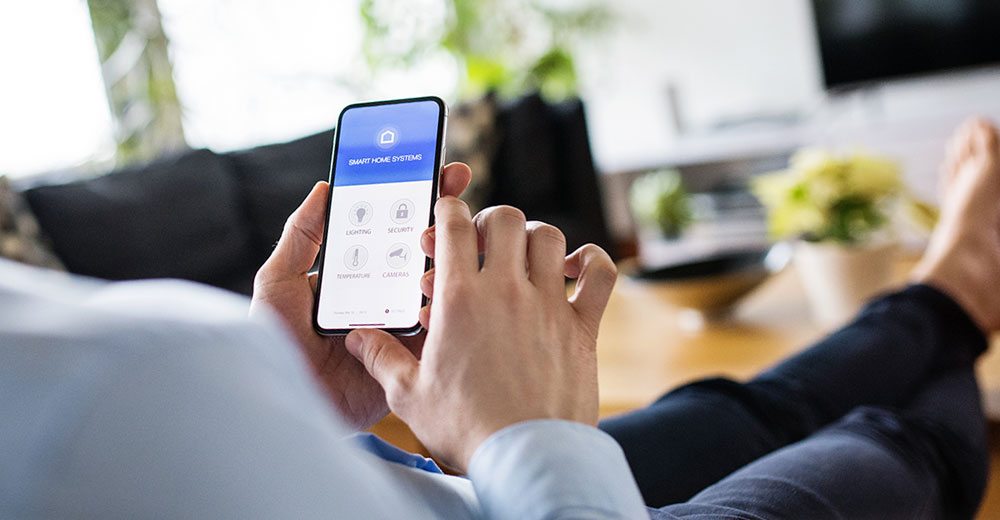Smart home technology is quickly becoming more mainstream than niche. As people monitor and control so many aspects of their lives through apps and smart devices, they expect to do the same with their homes.
From security systems to intelligent pet doors, smart home technologies are evolving on pace with the accelerated consumer demand. Revenue in the smart home market for 2021 is projected to reach US$28 billion and swell to $46 billion by 2025, according to Statista.
TechNewsWorld spoke with experts in the field of domotics — or information technology in the home — to get their take on the growing popularity and the evolution of smart home technologies.
Sanctuary Space
“Smart home technology was surging before the start of the pandemic, as consumers felt the need to be more connected to their homes, no matter where they were,” Roger Emmer, senior director of product marketing for Vivint, explained to TechNewsWorld.
“That said, since the first lockdown and stay-at-home orders began more than a year ago, consumers’ relationships with their homes have fundamentally changed. Our homes served as a safe haven from an unpredictable threat, and many consumers feel a strong sense of connection to their homes that didn’t exist prior to the pandemic.
“Smart home technology helps consumers keep an eye on their homes, even as they start to venture back out into the world,” he observed.
The pandemic has affected how people see and experience their homes. It’s also encouraged many dwellers to seek out smart home technologies to help improve the security, convenience, and energy efficiency of their living spaces.
“As consumers spend more at home due to the global pandemic and physical distancing efforts that have been implemented, people are appreciating their surroundings even more and have reported an increased desire to improve upon and upgrade their homes — which is why it is not surprising that amid the global pandemic, sales of smart home solutions have increased,” Chris Carney, CEO of Abode, told TechNewsWorld.
Safety First
One of the drivers of the smart home technology market has, from its beginning, been security systems; which continue to be central to smart home offerings.
“We have seen an increase in the adoption of smart home security systems in the past year,” said Carney. “Consumers put an emphasis on home security and safety and began to rely on smart home security systems to provide them with the peace of mind they were looking for when it came to keeping their home and families safe.”
“Other factors that are driving adoption include decreased costs, ease of use, and continually-expanding features and compatibility. Combined, these elements are making consumers more aware of the benefits of smart home security offerings,” he added.
Security systems are offering more features that consumers desire to keep an eye on their homes, both inside and out.
“Smart security devices should feature two-way communication and sensors or cameras that capture events both inside and outside of the home in real time, giving users access to a live feed of events at any time,” said Carney. “Security devices that can be easily integrated with voice assistants are also proven to be more desirable among consumers who are looking to add a variety of devices to a single network.”
Covid Drove DIY Installs
There’s a range of types of smart home security systems, from those that require professional installation to those that can be self-installed.
“As people are becoming more at ease with the notion of the connected home, smart home technology and security, in particular, have become increasingly popular,” Amy Nagy, a spokesperson for SimpliSafe, explained to TechNewsWorld.
“This is especially true of DIY smart home technology, which grew in popularity during the Covid-19 pandemic when people didn’t want to risk exposure by bringing an installation professional into their homes.
“Since the onset of the pandemic, and out of necessity to install new products independently, we’ve seen a shift in mindset where consumers are not only comfortable with, but confident in, their own install. As such, there is a willingness to take on projects like installing home security all by themselves, without professional help,” Nagy stated.
Environmental Control
Smart home technologies are also popular for controlling the home’s environment, including energy usage and other elements.
“In an age when many are working long hours and have less leisure time, smart home tech can make life easier and reduce time spent on chores and menial tasks,” Verena Grill-Klattenhoff, manager of PR and communications for tado°, told TechNewsWorld.
“The smart home enhances people’s lives in a number of ways. It’s making homes safer, more comfortable, more energy-efficient, and increasingly more cost-effective. People with limited mobility or health issues can use voice control so that they do not have to walk into every room to switch off the lights or answer the door when it rings.
“In times of climate change, saving energy has become a critical issue that the smart home can support. No other category in the smart home saves users money like a smart thermostat, while also helping the environment,” she explained.
Better Living
Installing smart technologies can also be seen as a kind of lifestyle choice, giving people the experiences they desire from their homes.
“People want a smart home that provides them with a positive experience, with products and services that help to achieve different goals such as making life easier, living a more sustainable life, saving people time, giving a better sense of security and providing more peace of mind,” said Grill-Klattenhoff.
“Intelligent robot vacuums clean the floor while not at home, video doorbells, smart locks, and security cameras connected to the smartphone offer improved safety and increased peace of mind, and all can be controlled by voice command easily and quickly.
“For some people, smart home products help to address issues they have in their daily lives. Others just want to be at the forefront of technology enjoying the benefits smart home products deliver,” she reasoned.
Multifamily Smart Homes
It’s not just single-family residences that are smart. Residents in multifamily homes and apartment buildings are steadily relying on these technologies, as well.
“A year and a half into the pandemic, we’re seeing that remote management, automation, and frictionless experiences are taking off in new ways,” Steve van Till, founder and CEO of Brivo, told TechNewsWorld.
“Keys are becoming a thing of the past, in favor of mobile credentials and smart locks; remote control thermostats manage energy costs and create green buildings; and water sensors can alert tenants about leaks or freezing pipes — all of which can mitigate spiraling insurance and repair costs, as well as save money on a regular basis,” he detailed.
“Smart home tech is becoming less of a nice-to-have for multifamily residences and more of a value prop to attract new renters as we enter a world where your phone is your remote control, and we navigate a world without physical keys,” van Till insisted.
Smarter Smart Homes Coming
The smart homes of the future will likely to continue to evolve with available technologies, delivering even more control to the people — and pets — who inhabit them.
“We’re starting to see a transition from novelty items, like color-changing bulbs, to products which add more utility, such as smart ovens, security systems, and of course, window and door automation products,” Adam Smithline, co-founder of Wayzn, which markets a device that turns sliding glass doors into smart dog doors.
Smart homes will become even smarter, as they incorporate elements of AI.
“From the technology side, connectivity and human-machine interface (HMI) development lead the way and are in significant demand across the smart home and their respective product lines,” Andrew Glickman, director of strategic development for Jabil, told TechNewsWorld.
“These are key pieces that continue to become more technologically-advanced and more cost-effective, which in turn are being integrated into more and more products,” he added. “As it pertains to smart home end markets, we’ve seen many more products becoming connected with [these] advanced features to help the end consumer with functionality, ease of use, and productivity.”

























































